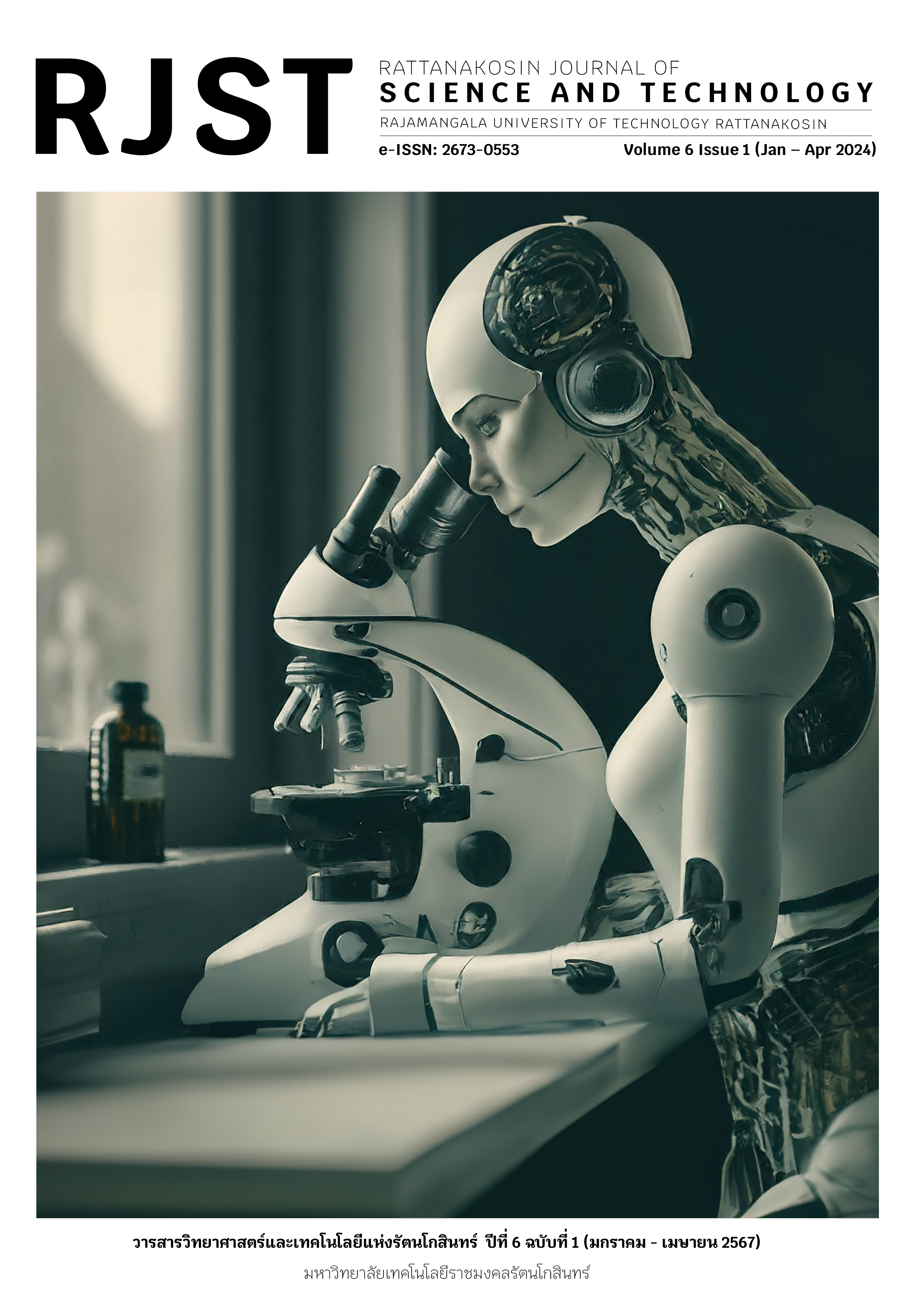The Development Ready to Cook by Freeze Drying with Low Energy Green Curry
Main Article Content
Abstract
This research concerned the development ready-to-cook with low energy Thai curry. The purpose was to study and develop a Low Energy Thai coconut milk curry recipe as a healthy semi-finished dried food in accordance with current consumer demand, value, and peferences. A questionnaire was utilized to collect data from general consumers in order to study and generate a standard recipe. In an experiment, a recipe was developed by using fresh skim milk to partially replace coconut milk, thus increasing nutritional value. The researcher used a sensory quality assessment with panelists together with experts. The most accepted recipe was studied in terms of nutritional and research was conducted concerning the procedure for dried, ready-to-cook, and semi-finished food through a freeze-drying process. According to the study results from the questionnaire survey, the preferences of consumers for Thai coconut milk curry were mostly for green curry ( = 3.71). In the case of semi-finished/finished food products containing coconut milk curry, nearly half of the consumers (40%) decided to buy green curry products. This conformed to the factors of selection for buying semi-finished food, which consumers tended to buy, liking cleanliness and taste according to preference at a high level ( = 4.71, 4.60 and 4.56). The researcher selected to study and develop a green curry recipe applied from a standard green curry recipe from previous research dealing with the development of standard Thai food recipes for different ceremonies (Phongsak, 2020), with the most acceptance by panelists and experts at an overall preference level of = 8.13±0.86. The recipe was studied and developed by using fresh skim milk to replace coconut milk at the 50% level, which was mostly accepted with an overall preference level of = 8.30±0.79. The fresh skim milk to partially replace coconut milk in Thai curry has low energy and more nutrition as standard. Finally regarding the study of ready-to-cook process with freeze drying.
Article Details

This work is licensed under a Creative Commons Attribution-NonCommercial-NoDerivatives 4.0 International License.
The content within the published articles, including images and tables, is copyrighted by Rajamangala University of Technology Rattanakosin. Any use of the article's content, text, ideas, images, or tables for commercial purposes in various formats requires permission from the journal's editorial board.
Rajamangala University of Technology Rattanakosin permits the use and dissemination of article files under the condition that proper attribution to the journal is provided and the content is not used for commercial purposes.
The opinions and views expressed in the articles are solely those of the respective authors and are not associated with Rajamangala University of Technology Rattanakosin or other faculty members in the university. The authors bear full responsibility for the content of their articles, including any errors, and are responsible for the content and editorial review. The editorial board is not responsible for the content or views expressed in the articles.
References
กองโภชนาการ กระทรวงสาธารณสุข. (2544). ตารางแสดงคุณค่าทางโภชนาการของอาหารไทย Nutritive Values of Thai Food. กรุงเทพฯ: กระทรวงสาธารณสุข.
จิราภา สาสุนัน. (2562). เปรียบเทียบการเตรียมหัวเชื้อโยเกิร์ตผงโดยวิธีการทำแห้งแบบพ่นฝอยและ วิธีการทำแห้งแบบแช่เยือกแข็ง. มหาวิทยาลัยศิลปากร.
ทวีพร เนียมมาลัย. (2546). การพัฒนาผลิตภัณฑ์ขนมหม้อแกงนมสดเมืองเพชรที่ผู้บริโภคยอมรับได้. มหาวิทยาลัยราชภัฏเพชรบุรี.
นรากร ศรีสุข. (2550). การผลิตโยเกิร์ตผงโดยการทำแห้งแบบแช่เยือกแข็งและการเปลี่ยนแปลง คุณภาพระหว่างการเก็บรักษา. มหาวิทยาลัยจุฬาลงกรณ์.
พธิญดา แก้วสวี. (2552). การใช้สารทดแทนไขมันในน้ำแกงกะทิไขมันต่ำ. มหาวิทยาลัยสงขลานครินทร์.
พงษ์ศักดิ์ ทรงพระนาม และมาริน สาลี. (2544). การพัฒนาตำรับมาตรฐานอาหารไทยในพิธีการต่าง ๆ. ภาควิชาอาหารและโภชนาการ คณะคหกรรมศาสตร์ สถาบันเทคโนโลยีราชมงคล.
พัชรลักษณ์ และคณะ. (2561). การใช้นมและนมผงทดแทนกะทิในผลิตภัณฑ์ขนมปังสังขยารสนมเย็น. มหาวิทยาลัยราชภัฏวไลยอลงกรณ์ในพระราชูปถัมป์. 620-626.
สุพรรณิการ์ โกสุม. (2546). การใช้นมขาดมันเนยทดแทนกะทิและการเสริมแครอทในขนมชั้น. ปริญญามหาบัณฑิต มหาวิทยาลัยเกษตรศาสตร์.
สุภรณ์ พจนมณี. (2546). ตำรับอาหาร. พิมพ์ครั้งที่ 9. กรุงเทพฯ.
สำนักหอสมุดและศูนย์สารสนเทศวิเทยาศาสตร์และเทคโนโลยี กรมวิทยาศาสตร์บริการ กระทรวงวิทยาศาสตร์และเทคโนโลยี. (2556). พริกแกง (Curry Paste). กรุงเทพฯ: กรมวิทยาศาสตร์บริการ กระทรวงวิทยาศาสตร์.
Ewa Jakubezyk and Aleksandra Jaskulska. (2021). The Effect of Freeze-Drying on the Properties of Polish Vegetable Soups. Applied sciences, 2021 (11) 654.
Mariana A. Uscanga, Ana Salvador, Maria del Mar Camacho and Nuria Martinez-Navarrete. (2021). Impact of freeze-drying shelf temperature on the bioactive compounds, physical properties and sensory evaluation of a product based on orange juice. International Journal of Food Science and Technology.


